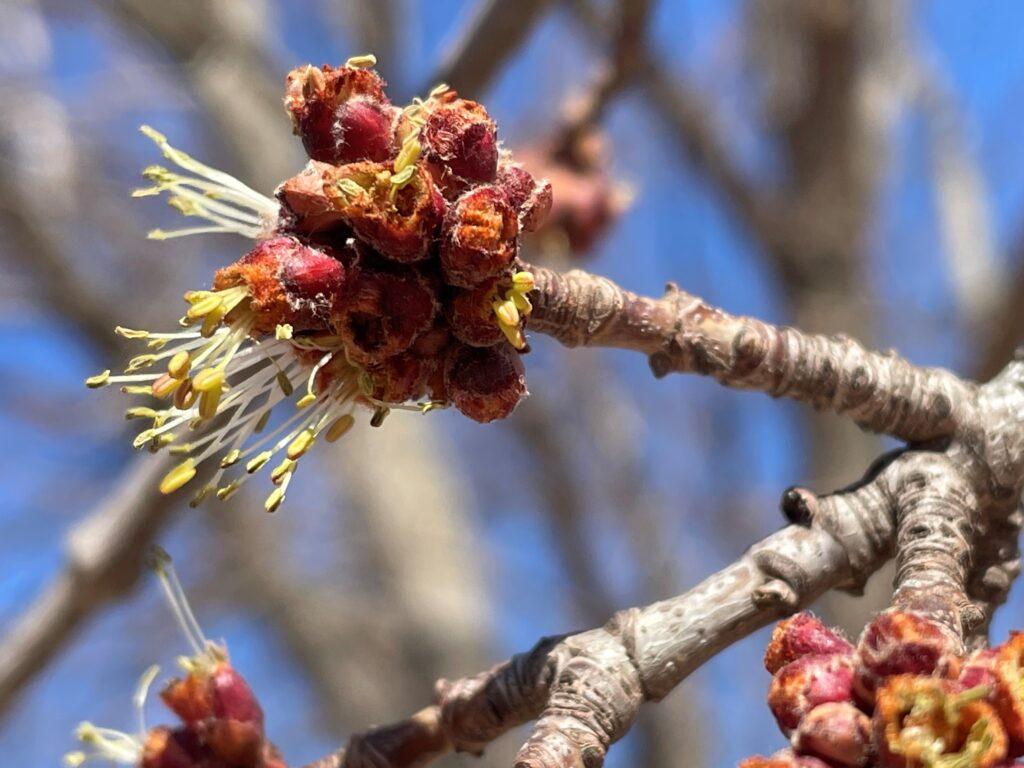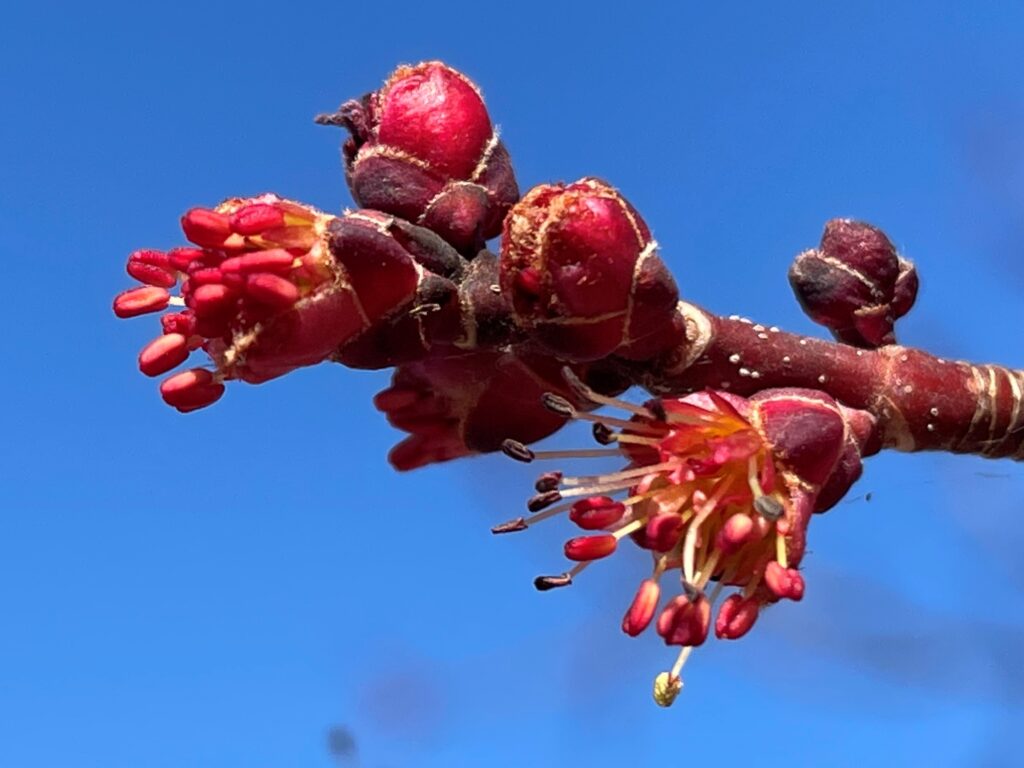Social media is blowing up right now with photos of colorful bulb flowers including daffodils, crocuses, and dwarf irises. And why not? Who doesn’t love to see these splashes of color in a drab, brown landscape along sidewalks to stimulate our sights after a long winter?! Nobody, however, seems to be posting photos of the much greater masses of wind-pollinated flowers that have also been blooming and tickling our senses…our nasal passages, that is.
For weeks now, my eyes, nose, and throat have been growing increasingly runny and itchy. From a distance, I’ve been seeing swelling buds on trees, and last week I did some investigation. Sure enough, the first blooming trees (silver maples, red maples, and eastern red cedars) at Dyck Arboretum are in full bloom.

Insect-pollinated flowers have heavy pollen. They need to attract insects with colorful petals to carry pollen away on their hairy bodies to other flowers. Conversely, wind-pollinated flowers have light pollen that carries easily in the wind once released. They do not need to invest expensive energy on creating large, colorful petals and are thus more visibly obscure.
Airborne pollen also gets deposited in our noses, eyes, and throats. Enough said.


